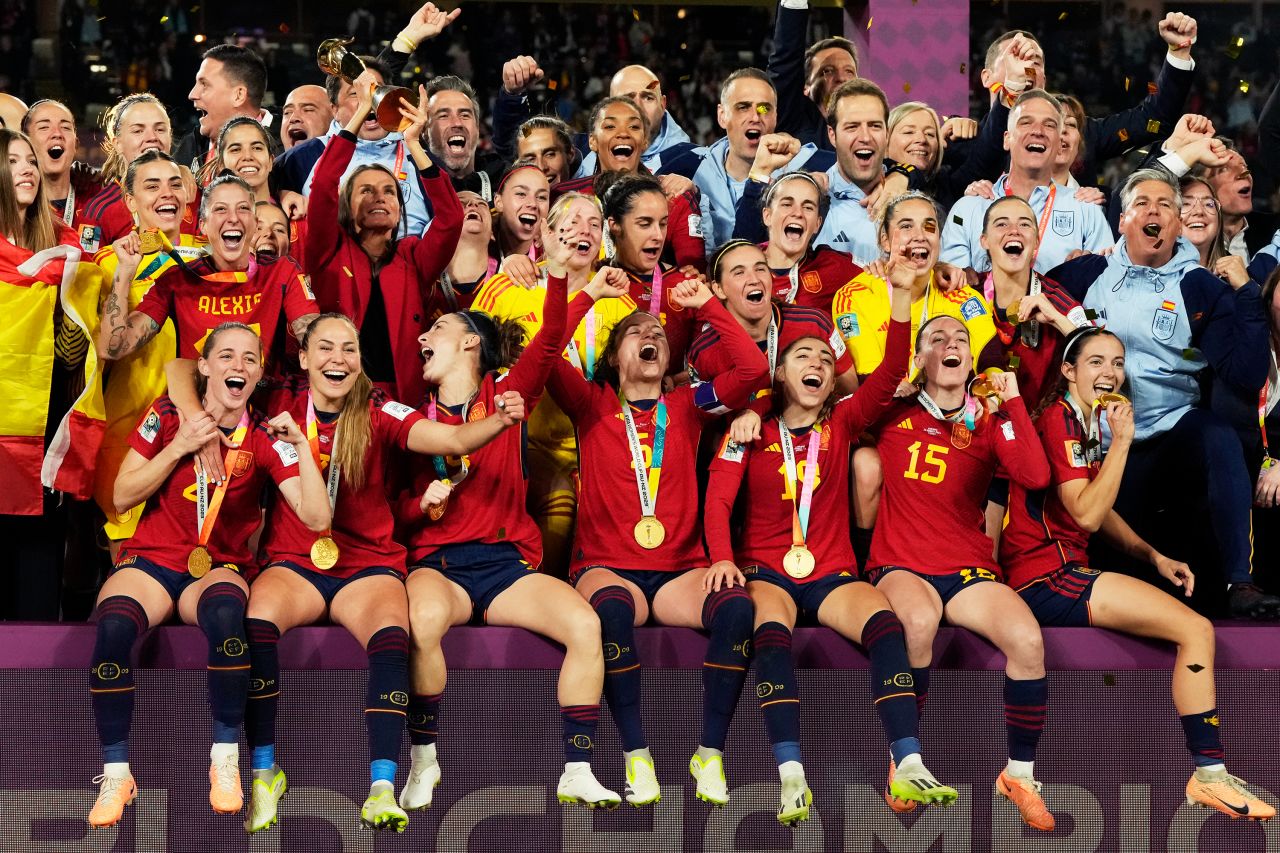When England take the field at Sunday’s Women’s World Cup final, the team won’t look the same as the one that won the European championship last July. The difference? No white shorts.
They are not alone. While some teams still donned light shorts at this year’s tournament, including Zambia and the Philippines, many joined England in adopting alternative colors. The number of nations whose uniforms feature white shorts decreased from 2019’s tournament, despite the number of participants expanding from 24 to 32. Notably, most of the teams that opted for white last time around switched color for 2023, including Canada, France, Nigeria and South Korea.
The move is part of a growing trend — and one not limited to soccer — aimed at tackling period anxiety among female athletes.
It comes after Ireland’s women’s rugby team swapped its white shorts for navy ones earlier this year and Wimbledon organizers relaxed their rules, allowing female competitors to wear dark-colored shorts under their all-white outfits for the first time. After England unveiled its new kits for the World Cup, forward Lauren Hemp told reporters the decision to switch from white shorts to blue was “a massive step in the right direction.”
“We can now feel comfortable when sometimes we might not have been if it was your time of the month,” she added. “It’s great to move away from the white shorts, not having that worry and focusing on the game.” Hemp plays in the English Women’s Super League for Manchester City, which in 2022 changed its uniform to exclude white shorts, in favor of burgundy ones, following feedback from players. (Manchester City’s men continue to wear the team’s traditional blue and white.)
The shift away from white shorts for women has been triggered by the rising popularity of certain sports, according to Nicole Melton, an associate professor of sport management at the University of Massachusetts Amherst. With over a million tickets sold, this year’s World Cup is the most attended standalone women’s sporting event in history, organizer FIFA said.
“The global attention that women’s soccer has received over the past 25 years, not only in the United States, but in Europe and South America, (means) there’s just more attention on it and more interest in it,” she said in a phone interview. “And so, it’s just given those women more of a platform to speak out on these issues.”
Allison Smith, an assistant professor of sport leadership and administration at the University of Massachusetts Boston, meanwhile said in a phone interview that getting rid of white shorts “is a really small thing that shows the big impact that women’s sports is starting to have.”
Read more here about the trend in women’s sports.









































